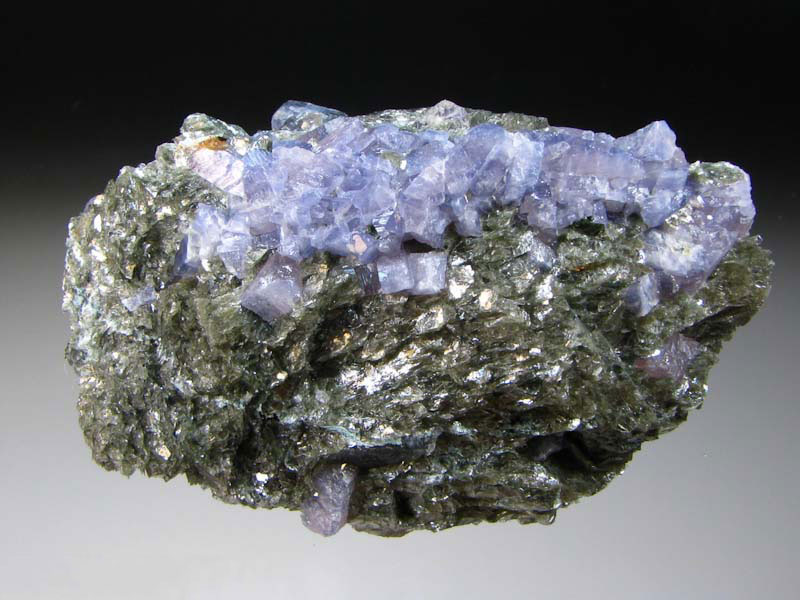Lawsonite is a rare low-temperature metamorphic mineral, mainly occurring in glaucophane schist and in some basic rocks and marbles of sodium zoisitization.
Gem-grade crystals are mainly from Covelo, California, USA, with crystals about five cm long; Another famous place of origin is near Santa Clara in central Cuba. Other places include Italy, Japan, French New Caledonia, etc.
Basic properties of Lawsonite
- Chemical composition: CaAl2 (Si2O7) (OH) 2 · H2O.
- It belongs to the orthorhombic system, ao=8.90, bo=5.76, co=13.33A. Z=4. Spectral lines of main powder crystals: 2.624 (100), 1.550 (80),2.726(70).
- The single crystal is columnar or plate-like, and the aggregate is massive or granular.
- Colorless, or white, gray, blue, pink, Streaks white.
- Glass luster to grease luster, translucent to transparent.
- Cleavage {100,010} is complete.
- Hardness 6, density 3.05~3.12g/cm.
- Colorless under transmitted light or light blue-green.
- Pleochroism is found in thicker flakes: Ng colorless, Nm yellow, Np blue. Biaxial crystal, positive light, 2V79 °~85 °.
- Refractive index: Ng1.684~ 1.686, Nm1.6741~1.675, Np1.665。
- The birefringence is 0.019 ~ 0.021.
- Strong dispersion.

Physical properties of Lawsonite
The crystal is columnar or plate-like along the bottom axis. {010} and {001} cleavage is complete, and {110} cleavage is poor. The color is colorless and light blue. Hardness 8, Specific gravity 3.1.
Optical properties of Lawsonite
Colorless in the sheet. High Positive protrusion. When the slice is thick, or the tiny particles are light in color and have light blue to light yellow pleochroism, Ng blue, Nm yellow, Ng colorless.
The cross-section is rhombic, and the longitudinal section is a rectangular column. The interference color does not exceed one level under the orthogonal polarizers, the longitudinal section is parallel extinction, and the sign is extended.
The cross-section is symmetric extinction, and the long diagonal of the diamond is parallel to the slow light. The lamellar twins along (110) are often seen. The optical axis plane is parallel 010). The optical axis angle is quite large. Strong dispersion, γ<μ.
Where is Lawsonite from
As a metamorphic mineral of low temperature and high pressure, Lawsonite is mainly produced in crystalline schist (such as glaucophane schist, chlorite schist, etc.) and coexists with serpentine, kyanite, actinolite, epidote, garnet, rutile, Sphene, allanite, ilmenite, etc.
In addition, Lawsonite is also found in saussurite gabbro, some marble, and chlorite schist.
The countries and regions producing gem-grade Lawsonite in the world include the United States, Cuba, Italy, New Caledonia in the French Pacific, Japan, etc. For example, there are 5.08 cm long Lawsonite crystals in Covello, California, USA.
How to identify Lawsonite
It is difficult to distinguish the Lawsonite from zoisite in thin sections, but the birefringence of Lawsonite is greater than that of zoisite;
In addition, zoisite often has an abnormal interference color, which is not found in Lawsonite.
Lawsonite is also easily mistaken for scapolite. The difference is that the refractive index of Lawsonite is greater than that of scapolite. Lawsonite is a biaxial crystal, while scapolite is a uniaxial crystal.
Conclusion:
Lawsonite is a rare low-temperature metamorphic mineral, mainly occurring in glaucophane schist and in some basic rocks and marbles of sodium zoisitization. In terms of arts and crafts, its crystal is required to be blue, transparent, and with a large particle size. Faceted gemstones have sold on the market, weighing 2-3 carats.
